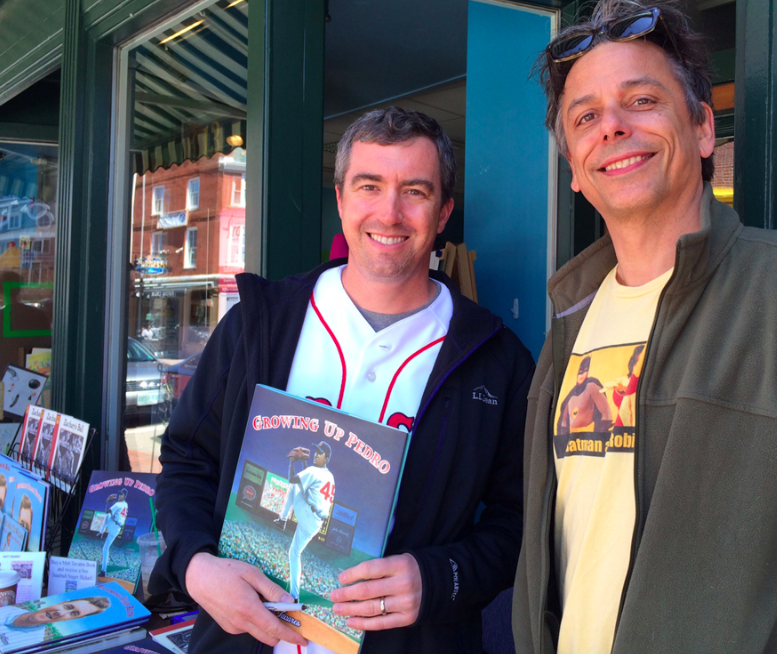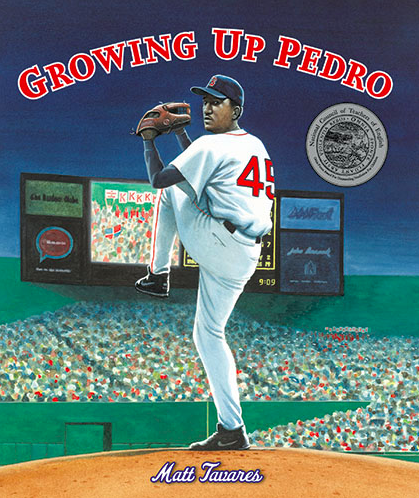* Rain Delay Man fans will also want to see his important message on the environment, Acid Rain Man.
All of a sudden, 1918 doesn’t seem so long ago.
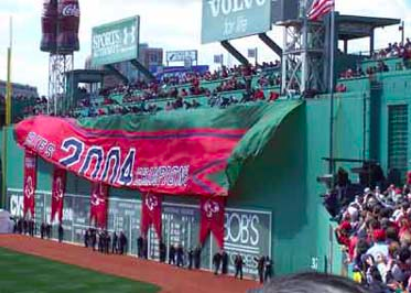
1903: We had the Cy Young. Boston acquired the 19th-century superstar from Cleveland in 1901. He was pulling down big money — $3,500 (or a little under a hundred grand in today’s money). And looking at his stats, Cy Young would have easily won about 10 Cy Young Awards. His first two seasons in Boston he busted out monster numbers (32-11, 2.15 and 33-10, 1.62), then took a 28-9, 2.08 record into that first World Series.
1918: Next up in this mini-cavalcade of Beantown baseball glory is the best baseball player of all-time. Babe Ruth. During Ruth’s five full seasons, the Sox won three World Series (1915, 1916, 1918). Dominant on the mound (think 23-12, 1.75 with nine shutouts in 1916) he hurled three World Series games for Boston and won them all — tossing a 1-0 shutout over Hippo Vaughn to open the 1918 Fall Classic.
1946: After missing the previous three seasons as a wartime U.S. military pilot, Ted Williams was back. Teddy Ballgame won MVP honors and lit up the 1946 All-Star Game, swatting two home runs while leading the American League to an 11-0 victory on his home turf, Fenway Park. But Williams suffered an elbow injury before the Series and the Sox lost to the Cards in seven.
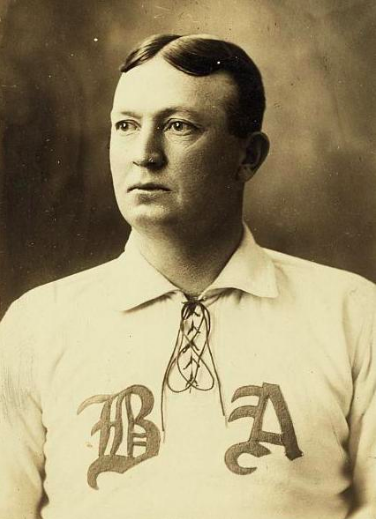
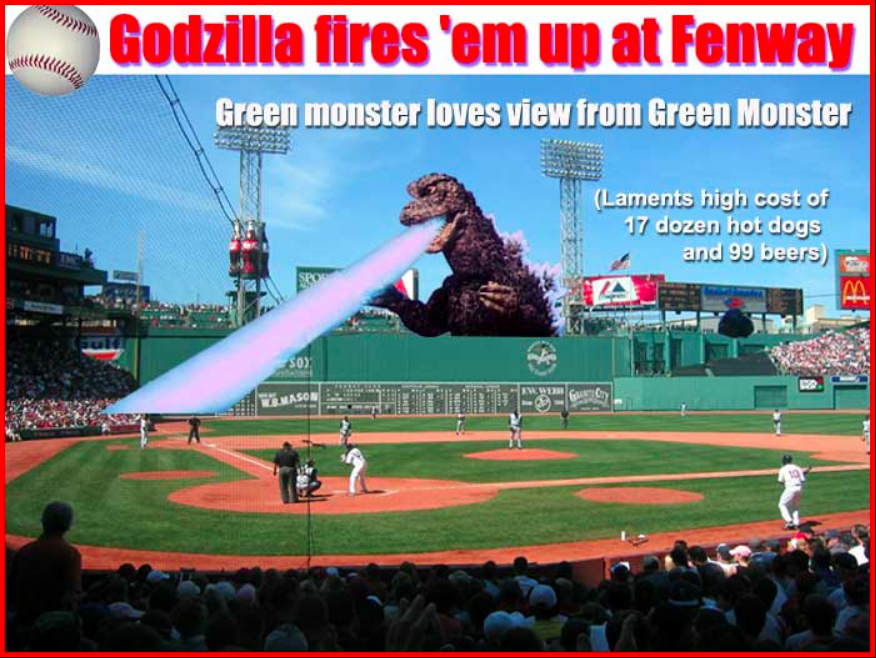
The image is featured in my award-losing 2011-12 series “Godzilla Among Us.”

Autographing copies of his new book during Children’s Day festivities at G.Willikers! in Portsmouth, N.H., the author spoke about being inspired by Pedro.
Tavares, whose 16 titles include seven centered on our national pastime, appears to be building an all-star baseball bibliography, as “Growing Up Pedro” follows previous books about Ted Williams, Henry Aaron and Babe Ruth.
